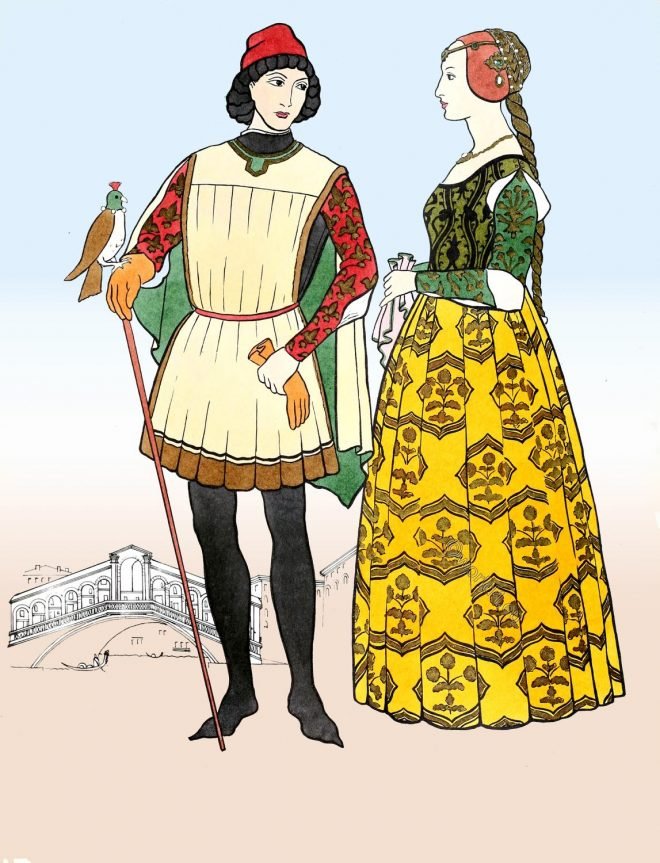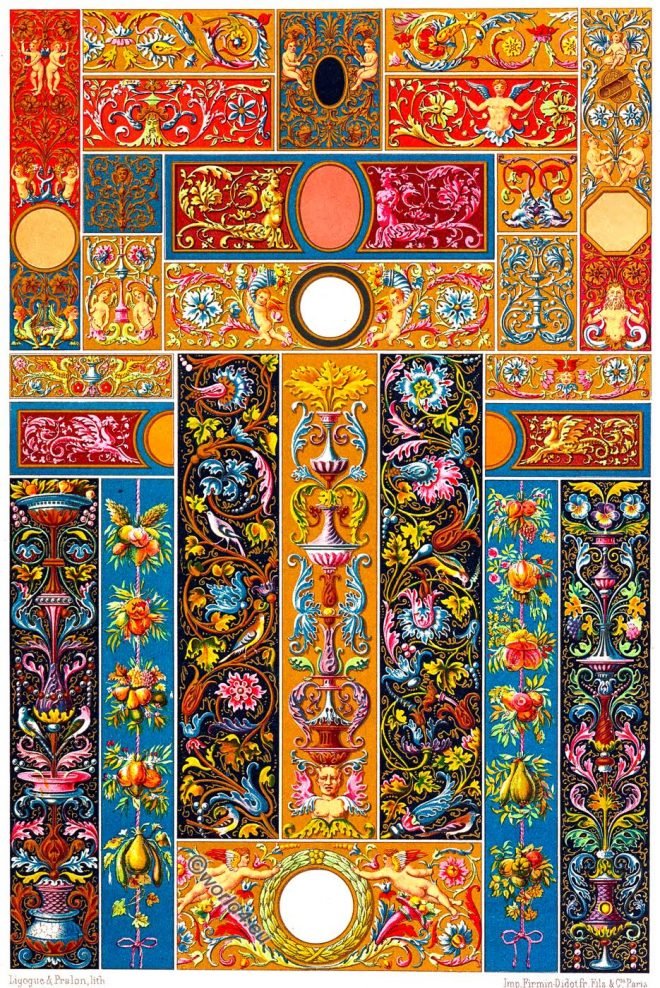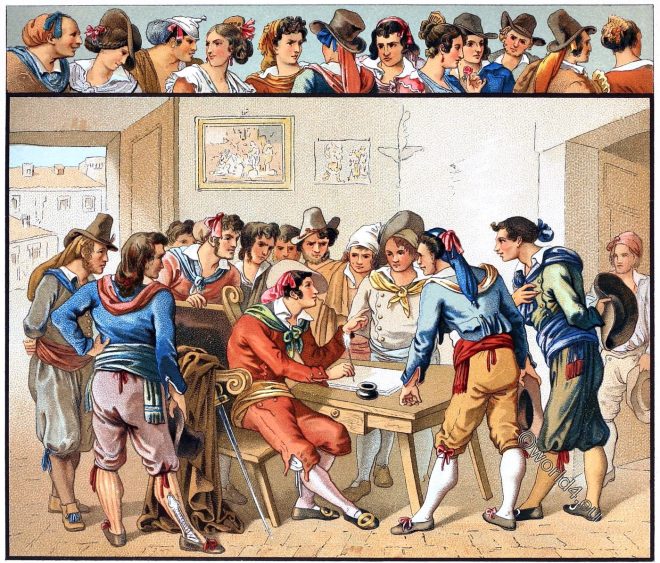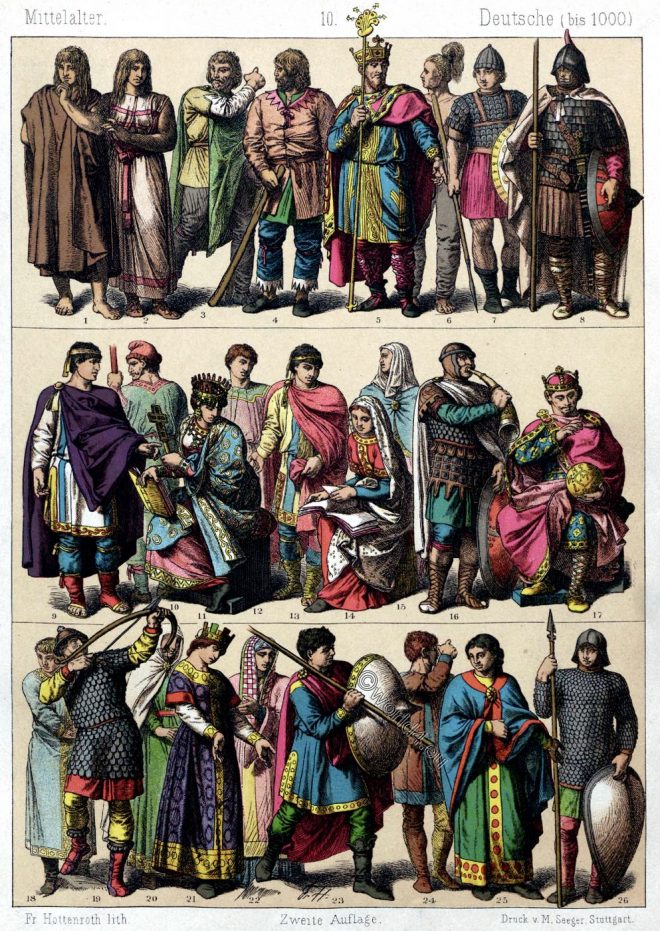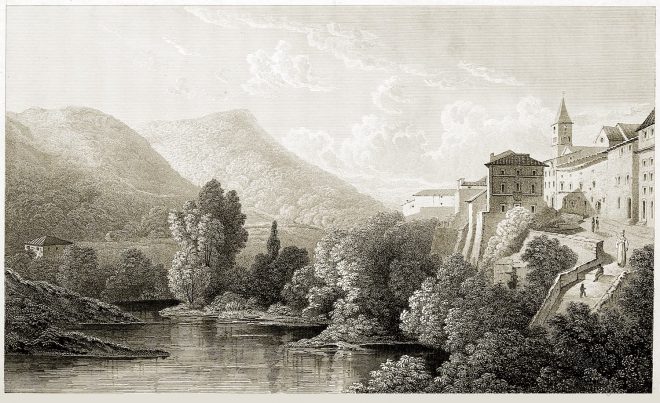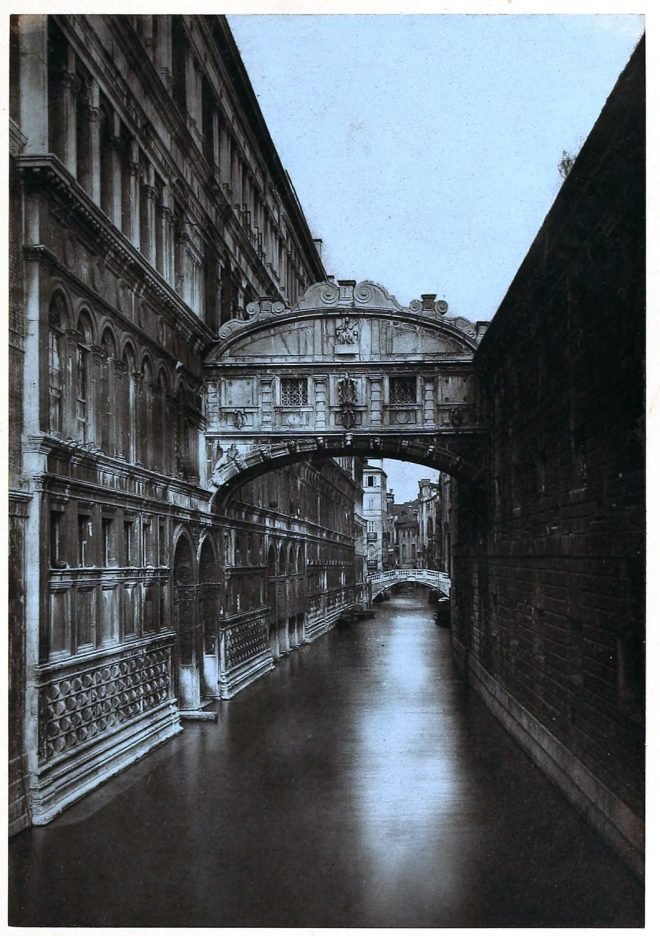Italy 15th century. Fashion from 1400 to 1500. Typical Italian Renaissance woman’s ensemble. The Cotehardie and houppelande.
Category: Italy
Zappatore Sassarese. Field worker from the Sassari area of Sardinia.
Sardinian field worker from the Sassari area of Sardinia. Historical Italian folk costume from Sardinia.
Italy. Rural costumes. The farmers of the Terra di Lavoro. The Pifferari.
The figures represent inhabitants of Monte Cassino, the old Casinum, in the Terra di Lavoro, as they walk through the streets of Rome as models and through the capitals of the mainland as musicians.
Musical instruments. Wind and Stringed instruments of ancient Rome.
Rome. Musical instruments. Wind instruments. Stringed instruments. Cymbals, Timpani and castanets.
Renaissance Paintings On Manuscripts and Frescoes.
THE subjects represented in this plate belong to the finest period of the Renaissance, when the art of the Italian miniature-painters had attained its highest pitch of perfection.
Italy. Roman folk costumes from Trastevere of the 19th century.
Italy. Roman folk costumes from 19th century. Costumes of the inhabitants of Trastevere. The folk hero Meo Patacca.
German clothing up to the 10th c.. Goths, Lombards, Merovingians.
German people in the dress at the end of the 10th century. Lombard king. Merovingian Franks. Carolingian Franks. Clothing in the Middle Ages.
Scene at Tivoli above the falls, where the Teverone glides along.
This view is taken above the falls, where the Teverone glides along, skirted on one side by the straggling town, on the other bordered by fertile pasturages.
Canova’s Tomb in the Church of Santa Maria dei Frari in Venice.
Tomb of Antonio Canova (1757-1822) sculptor. He is considered one of the main representatives of Italian classicism.
The Bridge of Sighs as the centre of the Byronic idea of Venice.
No other city is so fascinating to the imagination, so rich in associations, or so picturesque, as Venice.

